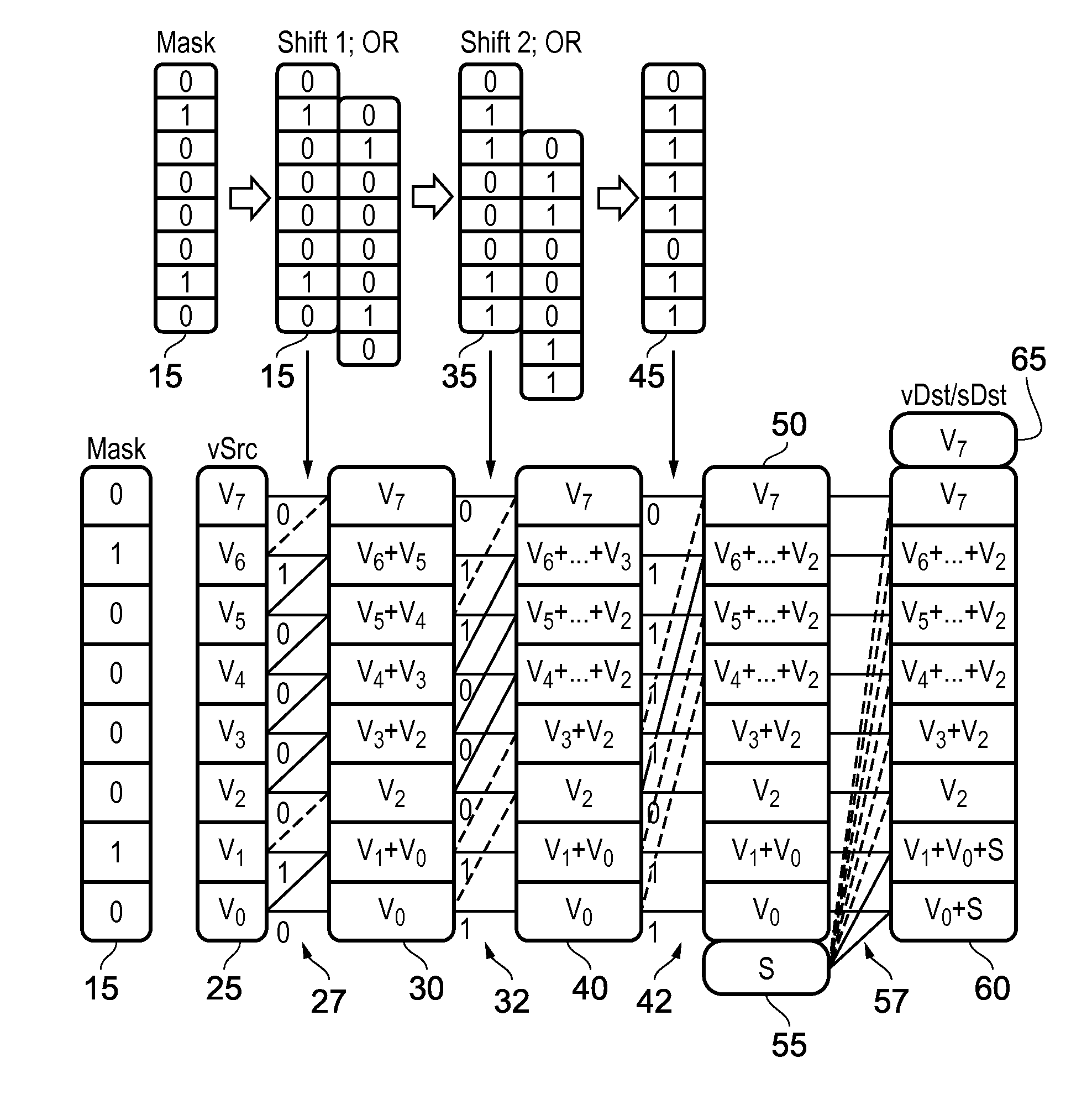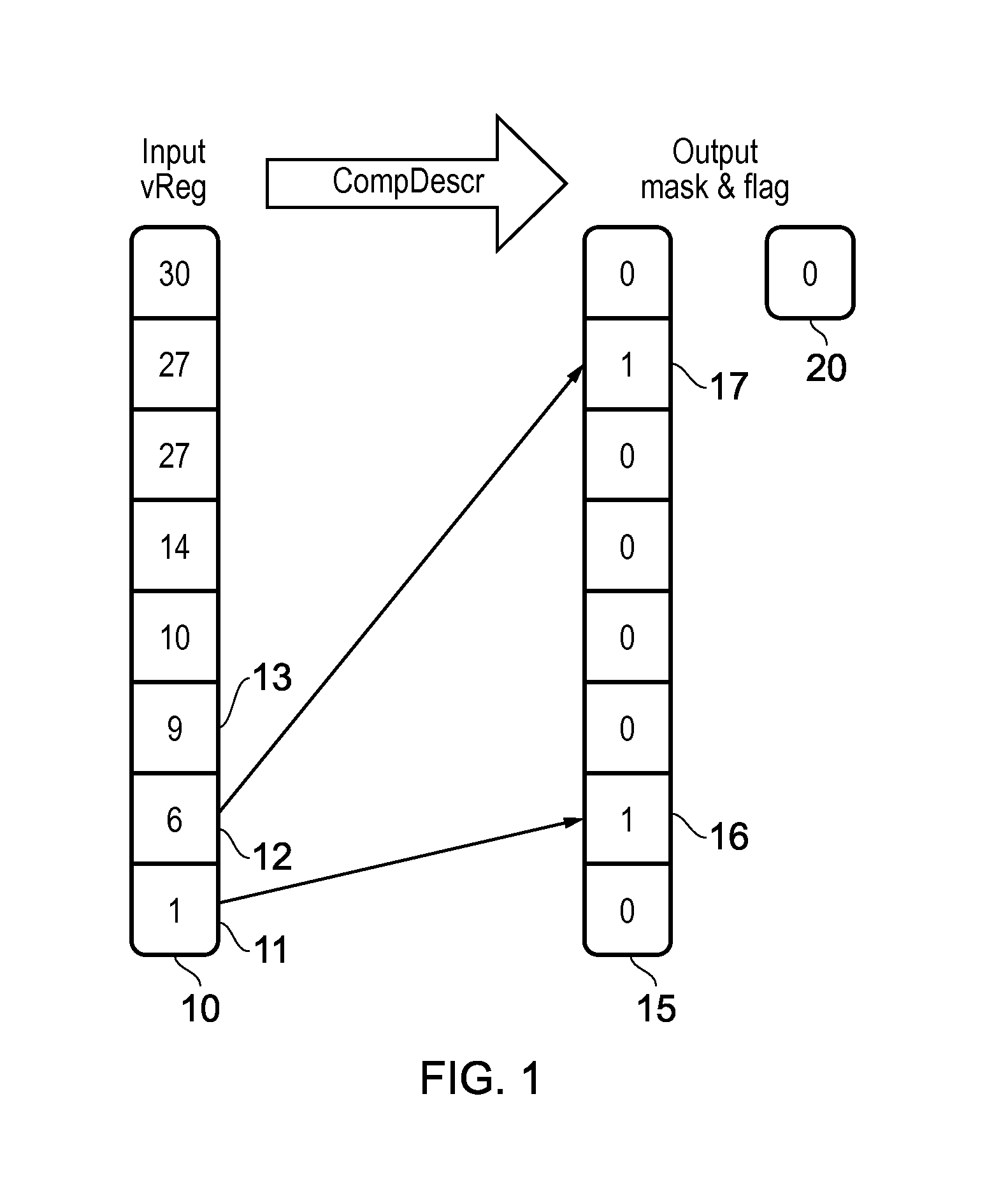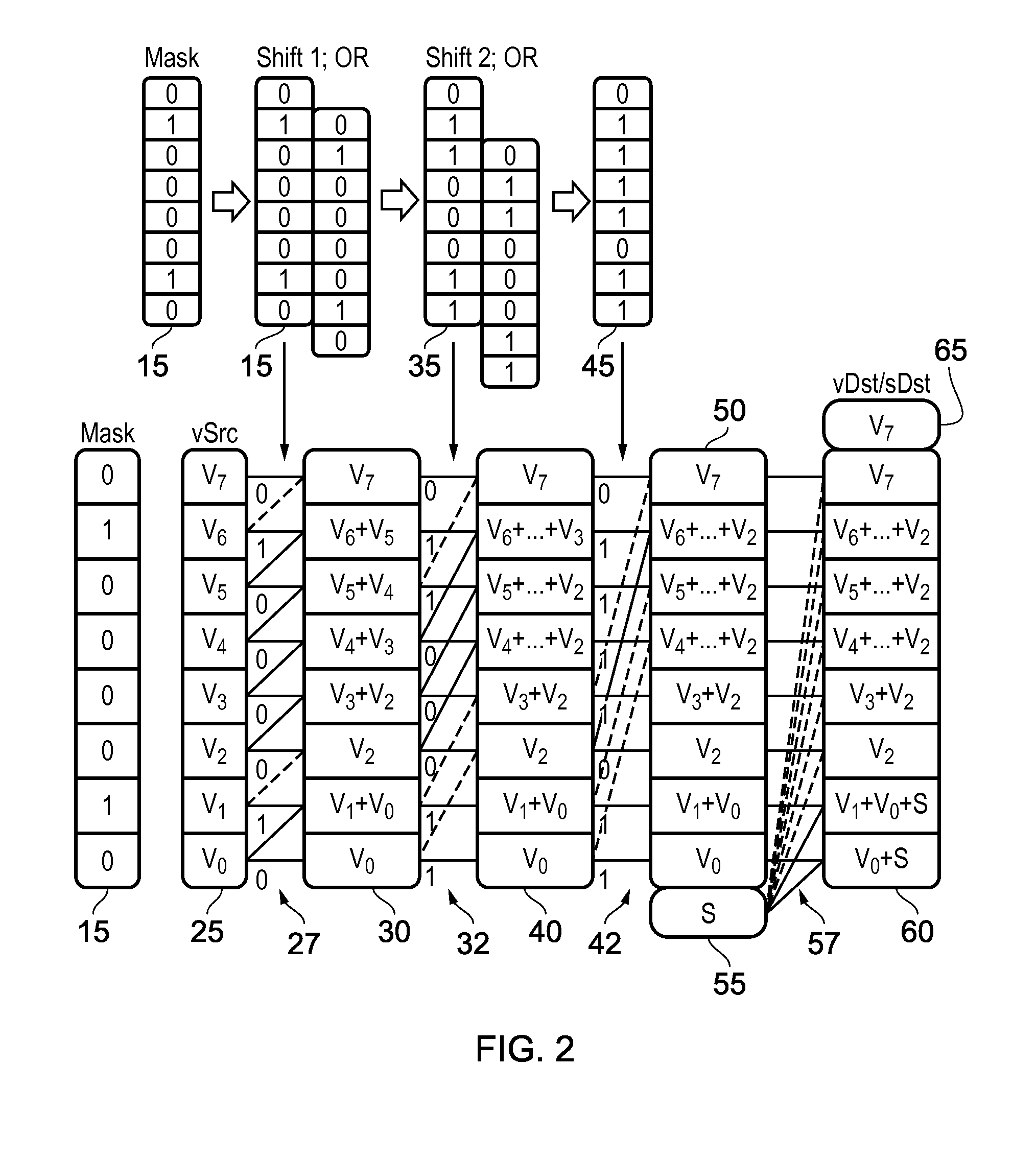Data processing apparatus and method for performing segmented operations
- Summary
- Abstract
- Description
- Claims
- Application Information
AI Technical Summary
Benefits of technology
Problems solved by technology
Method used
Image
Examples
Embodiment Construction
[0062]FIG. 1 schematically illustrates the performance of a compute descriptor operation in accordance with one embodiment. In particular, in one embodiment, predicate generation circuitry within a data processing apparatus is configured to be responsive to a compute descriptor instruction specifying an input vector operand 10 comprising a plurality of segment descriptors, to generate per lane predicate information 15 which is then used by vector processing circuitry of the data processing apparatus to perform a segmented operation. In one embodiment, as shown in FIG. 1, the input vector register 10 contains a series of unsigned data values, in one particular embodiment, the input vector register contains a series of eight 32-bit unsigned values. Each of the unsigned values in this embodiment represents the end of segment.
[0063]In this example, it is assumed that the vector processing circuitry provides eight lanes of parallel processing, and hence can perform a segmented operation ...
PUM
 Login to View More
Login to View More Abstract
Description
Claims
Application Information
 Login to View More
Login to View More - R&D
- Intellectual Property
- Life Sciences
- Materials
- Tech Scout
- Unparalleled Data Quality
- Higher Quality Content
- 60% Fewer Hallucinations
Browse by: Latest US Patents, China's latest patents, Technical Efficacy Thesaurus, Application Domain, Technology Topic, Popular Technical Reports.
© 2025 PatSnap. All rights reserved.Legal|Privacy policy|Modern Slavery Act Transparency Statement|Sitemap|About US| Contact US: help@patsnap.com



